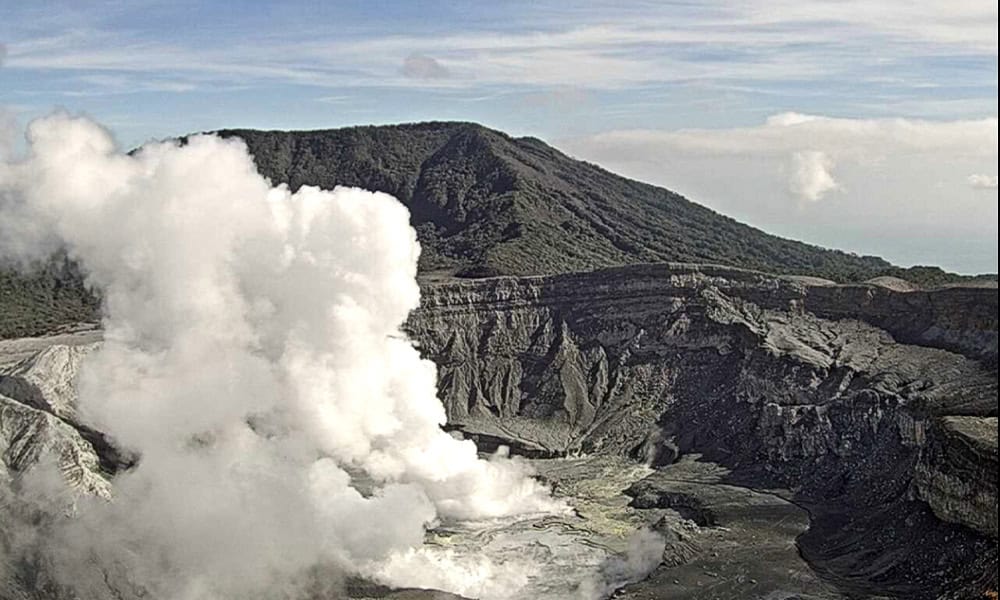The recent eruptions of Poás Volcano in Costa Rica have significantly disrupted tourism in nearby communities, including Poás, Poasito, Fraijanes, Vara Blanca, and Los Cartagos. Although these areas have not experienced direct effects such as ashfall or hazardous gas emissions, the volcanic activity has deterred visitors, leading to a sharp decline in local business revenue.
According to the Poás Volcano Chamber of Tourism, which represents nearly 60 businesses in lodging, recreation, and food services, local establishments have reported income drops ranging from 40% to 67%. The closure of Poás Volcano National Park, a major attraction drawing approximately 200,000 visitors annually, has exacerbated the situation. The park was shut indefinitely on March 28, 2025, following intensified eruptions and seismic activity, with ash plumes reaching up to 4,500 meters above the crater.
“The eruptions haven’t reached our communities directly, but the impact is undeniable because tourists are staying away,” said a local merchant in Poasito. Misinformation on social media platforms, including unverified claims about the volcano’s activity, has further fueled visitor reluctance, despite official assurances of safety in surrounding areas.
To mitigate financial strain, many business owners have reduced employee hours or adjusted schedules, though layoffs have been avoided so far. “We’re holding off on letting anyone go,” a restaurant owner in Fraijanes explained. “But some businesses have had to cut hours significantly, and a few have temporarily closed.”
The economic ripple effects extend beyond tourism. With fewer customers, businesses are purchasing less from local suppliers, impacting small-scale producers of fruits, dairy, and other goods. Local grocery stores, supermarkets, and transportation providers, who typically serve international tour groups, are also struggling. “In past years, Easter was a boom time, and we’d hire extra staff and extend weekend hours,” a Vara Blanca shopkeeper noted. “This year, with the park closed and the volcano active, we’ve had to scale back dramatically.”
The National Emergency Commission (CNE) declared a red alert for Poás Volcano National Park, citing sustained eruptive activity and ash plumes as high as 4,500 meters. Nearby areas like Grecia and Sarchí are under orange alerts, while Poás, Alajuela, and others remain on yellow, indicating potential risks from ash and gas dispersion. Authorities, including OVSICORI and the Ministry of Environment and Energy (MINAE), have emphasized that surrounding communities remain safe for visitors, urging the public to rely on official updates.
Historical context highlights the stakes: a 2017 eruption closed the park for over a year, costing local businesses millions in lost revenue. The current closure, combined with heightened volcanic activity since late 2024, threatens a similar economic toll.
Local businesses and residents are actively encouraging tourists to return, emphasizing that conditions outside the park are safe and that the area’s economy depends heavily on tourism. “We’re open, and we’re ready to welcome visitors,” said a lodging owner in Los Cartagos. “The volcano is part of what makes this area special, and we need support to keep our community thriving.”
The Costa Rican government and tourism boards are working to dispel fears and promote alternative attractions in the region, but recovery hinges on stabilized volcanic activity and the park’s reopening, which remains unscheduled as OVSICORI continues daily monitoring.






